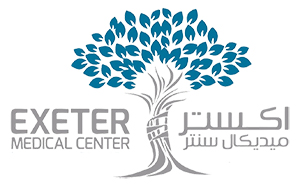 What is Scoliosis?
What is Scoliosis?
What is Scoliosis?
The Good Doctor – Scoliosis Surgery
The Good Doctor – Non Surgical Treatment for Scoliosis
What is Scoliosis?
How To Detect Scoliosis in Children
Everyone’s spine has natural curves. These curves round our shoulders and make our lower back curve slightly inward. But some people have spines that also curve from side to side, and rotate. Unlike poor posture, these curves can’t be corrected simply by learning to stand up straight. This condition of side-to-side spinal curves is called “scoliosis”. On an x-ray, the spine of a person with scoliosis looks more like an “S” or a “C” than a straight line. These curves can make the person’s shoulders or waist appear uneven. Some of these bones may also be rotated slightly, making one shoulder blade more prominent than the other. Scoliosis is a descriptive term and not a diagnosis. In more than 80% of cases, a specific cause is not known. Such cases are termed “idiopathic”, meaning “of undetermined cause”. This is particularly common in adolescent girls. Idiopathic scoliosis is typically called “infantile” in children 0-3 years old, “juvenile” in children 4-10 years old, “adolescent” in adolescents 11-18 years old, and “adult” in patients over 18 years old. Conditions known to cause spinal deformity are congenital spinal column abnormalities (present at birth – called congenital scoliosis, neurologic disorders (neuromuscular scoliosis), genetic conditions, and many other causes. Scoliosis does not come from carrying heavy things, athletic involvement, sleeping/standing postures, or minor leg length abnormalities.
Do I have Scoliosis?
Determining whether or not you have scoliosis is best done by a physician who performs a physical examination of your back. The examination is done with you standing in a relaxed position with your arms at your sides. The physician will view you from behind looking for curvature of the spine, shoulder blade asymmetry, waistline asymmetry and any trunk shift. You will then bend forward at the waist and the physician will view your back once again to look for the rotational aspect of the scoliosis in the upper part of the back (rib prominence) or in the lower part of your back (flank or waist prominence). Following this simple examination, the physician will usually initial radiographs of the spine viewed from the back and the side to see the entire spine from the neck to the pelvis. If scoliosis is present, the physician will measure the radiographs and provide you with a numerical value, in degrees, to help describe the scoliosis.
What Are My Treatment Options?
1. Observation This is for curves that have a small degree measurement when you are growing (adolescent scoliosis), or for moderate size curves (< 40-45 degrees) when you are done growing. For adults, observation and physical therapy are for those patients who have mild symptoms and have curves which are not large.
2. Bracing This is for curves between 25 and 45 degrees in growing children to prevent further progression of the curve while growth of the spine remains. The goal of bracing is to prevent further progression since the brace cannot correct curves.
3. Surgical Treatment This reserved for curves which are generally greater than 50 degrees for adolescent patients and adults. Surgery can be performed for smaller curves if the appearance of the curvature is bothersome to the patient or if symptoms are associated with the scoliosis in the adult patient. The goals of surgical treatment are to obtain curve correction and to prevent curve progression. This is generally achieved by placing metal implants onto the spine which are then attached to rods which correct the spine curvature and hold it in the corrected position until fusion, or knitting of the spine elements together.
For more information about Scoliosis and Spinal deformity we recommend the Scoliosis Research Society website www.srs.org.
P.O. Box 62248, Al Bateen, Abu Dhabi- United Arab Emirates.
www.exeterboneandjoint.com








